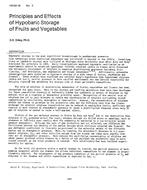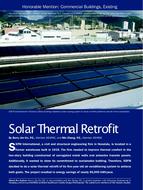Ventilation plays a crucial role in promoting the comfort and health of building occupants by diluting the indoor concentration of contaminants. It is sometimes costly in terms of energy consumption, but can also be beneficial from an energy perspective when free cooling is available. Typically these two cases are controlled by uncoordinated rules: minimum ventilation by fixed rates prescribed by standards, and free cooling by a local controller. This work is an exploratory analysis of the hypothesis that supervisory control that optimizes energy and indoor air quality (IAQ) objectives simultaneously and dynamically can yield better results in typical buildings than the current, nonintegrated local methods.
A multiobjective optimization framework was set up to determine optimal outdoor airflow and zone temperature setpoints based on energy use and pollutant concentration metrics. Test cases were implemented by numerical, simulation-based optimization for a core and perimeter zone and for three typical weather days. This proof-of-concept used perfect information over a 24-hour cyclical horizon. The results indicated that both standard fixed minimum ventilation and existing dynamic approaches were strongly dominated by the optimized strategies in some cases. The most striking results were in the winter, when HVAC energy use was reduced by up to 45% without significant degradation of IAQ in terms of the concentration metrics, and by between 20% and 30% with nearly unchanged or improved IAQ. Characteristics of the supervisory solutions in the winter included decreased ventilation in the evenings and much greater provision of outdoor air early in the morning if there was a nighttime buildup of emitted contaminants.
Citation: IAQ Conference: IAQ 2013: Environmental Health in Low Energy Buildings
Product Details
- Published:
- 2013
- Number of Pages:
- 6
- File Size:
- 1 file , 1.3 MB
- Product Code(s):
- D-2013IAQConf-76


